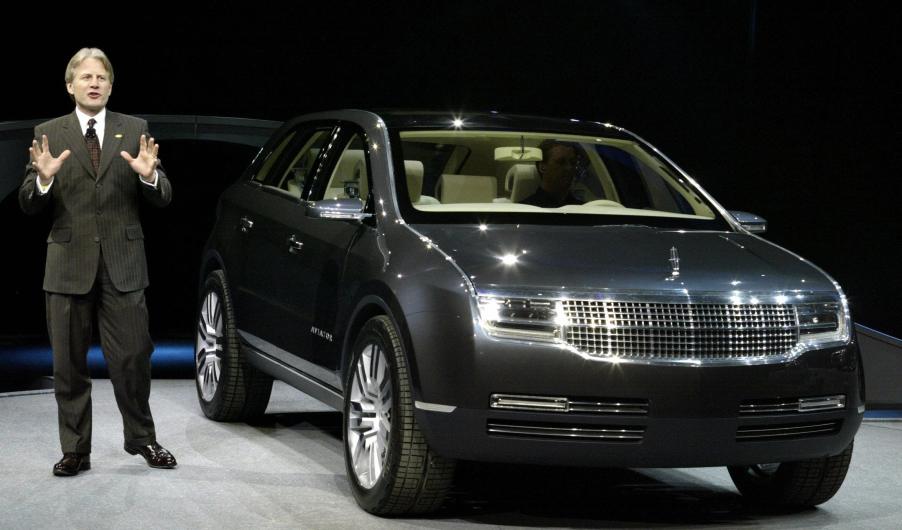
Why Do Lincoln Aviator Drivers Complain About the 2004 Model the Most?
If you’re a Ford lover but want something more luxurious, a Lincoln might be the answer. Lincoln is the luxury vehicle division of Ford, introducing Lincoln Continental in 1940. The Lincoln Aviator debuted in 2003 as a more affordable option to the Navigator.
While it looks fancy, it shares the same chassis with the third generation Explorer. So it’s no surprise that people liken the 2020 Lincoln Aviator Black Label to a fancier Ford Explorer.
A long history of complaints tarnish the Lincoln Aviator
The 2020 Lincoln Aviator base model begins at $52,000 while the Aviator Black Label runs about $90,000. If those prices are too steep, you may consider buying a pre-owned Lincoln Aviator.
Nevertheless, consumers have long complained about the Lincoln Aviator. And these complaints aren’t anything new — they started way back in 2004. Even the 2019 and 2020 Lincoln Aviator seem to have issues, especially the plug-in hybrid model.
There is a reason why Lincoln discontinued the Aviator after only three years. Yup. You read that right. Lincoln Motor Company halted production in 2005, with the last model produced at St. Louis Assembly in Fenton, Missouri.
While Lincoln remained low-key as to why the Aviator was discontinued, the long list of complaints gives us plenty of possible clues. Over 15 years later as the 2020 model creeps back onto the scene, bad reputations die hard.
What luxury vehicle starts falling apart within less than a year
REALTED: These 5 SUVs Offer the Most Cargo Space
Apparently the Lincoln Aviator. The earliest complaints concerning the Lincoln Aviator began in 2003 merely months after hitting the streets. Most notably, Aviator owners reported cracks in the rear panel.
While this may not seem like that big of an issue, imagine that occurring with any other luxury vehicle. After all, the entire purpose behind luxury is not worrying about the problems that come with economy vehicles.
What made things worse is the fact that Lincoln failed to rectify the issue. Consumers who purchased the 2005 Aviator also complained about cracks developing on the rear panel below the window.
On top of that, all three model years leading up to discontinuation suffered serious engine malfunctions. It begs the question: how could such a seasoned car manufacturer get things so wrong with its flagship division?
The top three things 2004 Lincoln Aviator owners complained about
The top three complaints, according to CarComplaints.com, included that pesky rear panel crack, engine shutting off while driving, and faulty AC/heating system.
According to Car Complaints, the only solution to the AC/heating problem is to replace it. On average, replacement costs $4,000 and was given a severity level of 8.0 — pretty bad. Among other engine problems, owners reported that the number eight-valve was prone to burning up at 50,000 miles.
The average cost of replacing a single valve ran Aviator owners around $2,500. Of all the other complaints, owners gave this problem a severity rating of 10 — awful.
Around 130,000 miles, 2004 Lincoln Aviators would suddenly decide they needed a break — while it’s being driven. That took the meaning of “high maintenance” to a whole new level. While the average repair cost was minimal, drivers gave this problem a severity rating of 9.5 — awful.
As for the cracked rear panels, no data was available about cost-of-repair; cracks usually appeared at around 61,000 miles. Owners gave that problem a severity rating of 7.4 — pretty bad.
A long list of other severe and possibly dangerous problems
Additional information provided by Car Complaints shows there have been 76 Technical Service Bulletins (TSBs). These official communications between car manufacturers and dealers explain how to fix certain common problems. Vehicle manufacturers operating within the United States are obligated by federal law to make their TSBs public.
TSBs from 2004 listed such issues like loud generator noise in “cold ambient temperatures,” rear axle noise, among other things. Looking over the lengthy TSBs list reveals that a majority of the TSBs covering common problems were in 2016.
In all fairness, most vehicles over a decade old and with over 100,000 miles have similar issues. However, not many older luxury vehicles or otherwise randomly pop out of park and roll away somewhere. The Lincoln Aviator is allegedly guilty of this 180 times.


